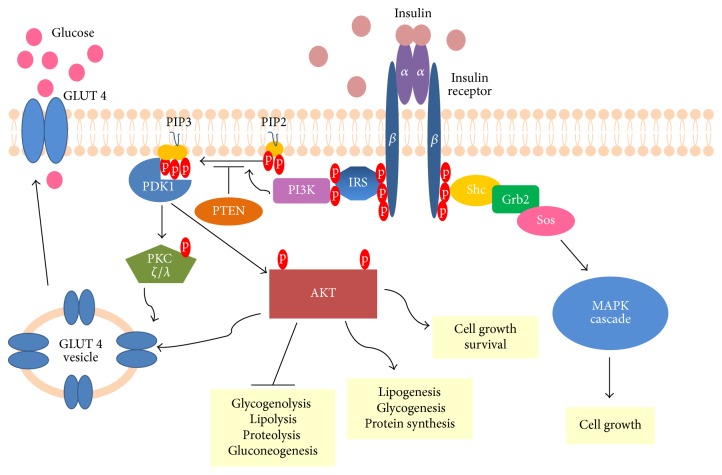Figure 1.
Insulin signalling pathway. Upon insulin stimulation, activation of insulin receptor and thus formation of many phosphotyrosine residues occur. Binding of IRS proteins and their phosphorylation precedes recruitment of PI3K, as well as subsequent PIP2 phosphorylation. Note that PIP3 can be converted to PIP2 through PTEN activity. PDK1 gets activated upon binding to PIP3, followed by the phosphorylation of PKC ζ/λ and AKT, which stimulate GLUT4 translocation towards the cell membrane and therefore glucose influx. Phosphorylated AKT mediates the repression of glycogenolysis, lipolysis, proteolysis, and gluconeogenesis as well as the activation of lipogenesis, glycogenesis, protein synthesis, and cell survival. The stimulation of insulin receptor is also accompanied by binding of adaptor proteins, known as Shc. The subsequent binding of Grb2 and Sos proteins initiates the MAPK cascade pathway. The activation of AKT and MAPK cascade results in the promotion of cell growth.

